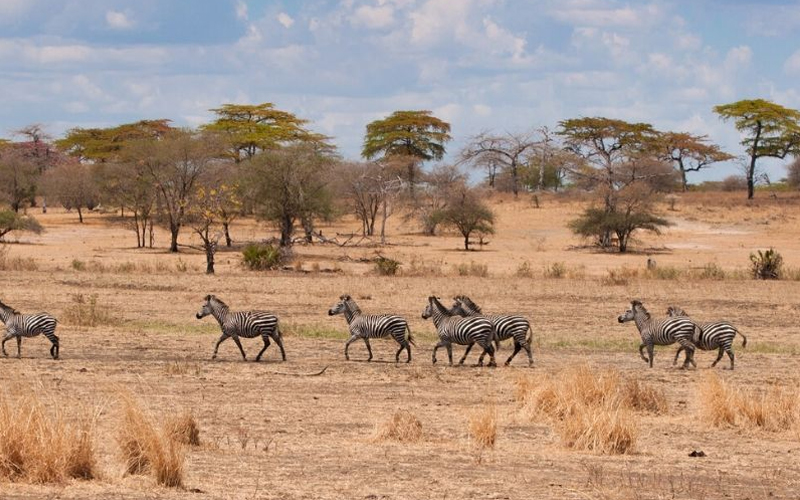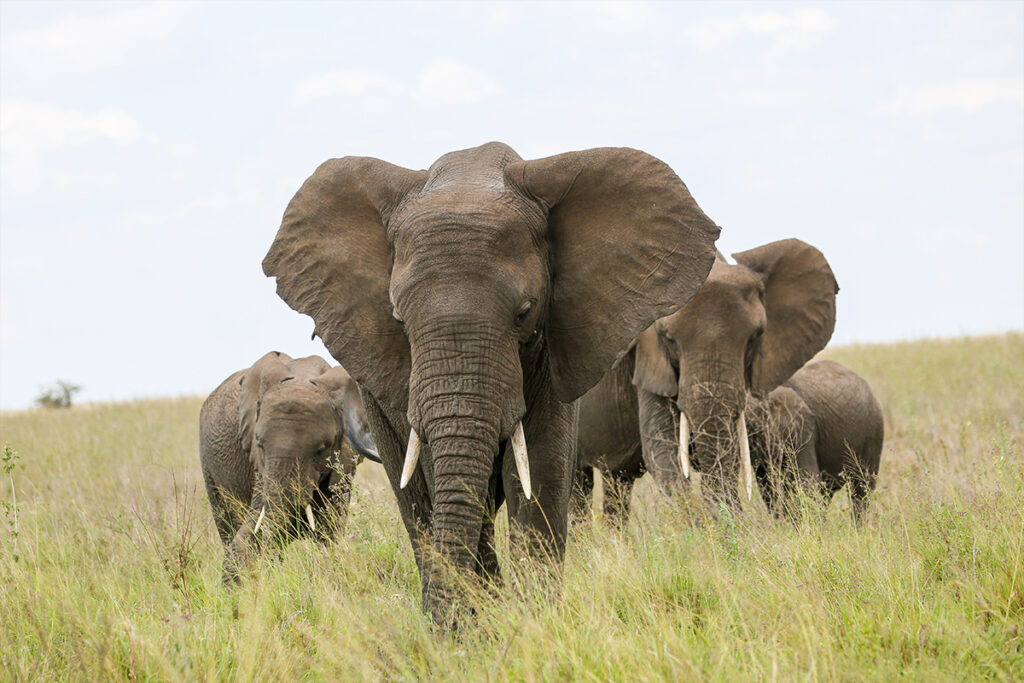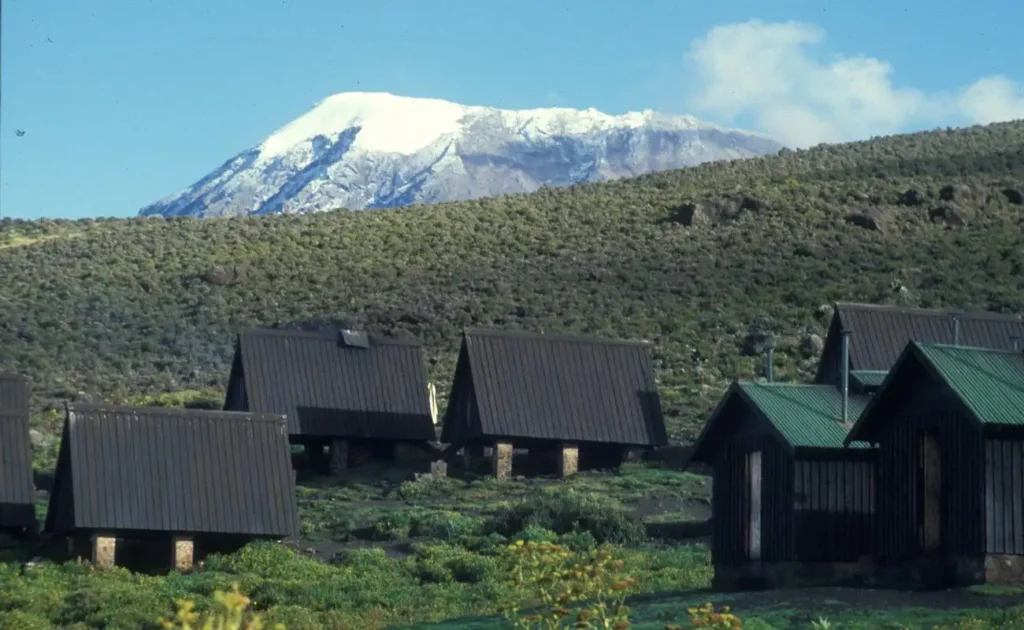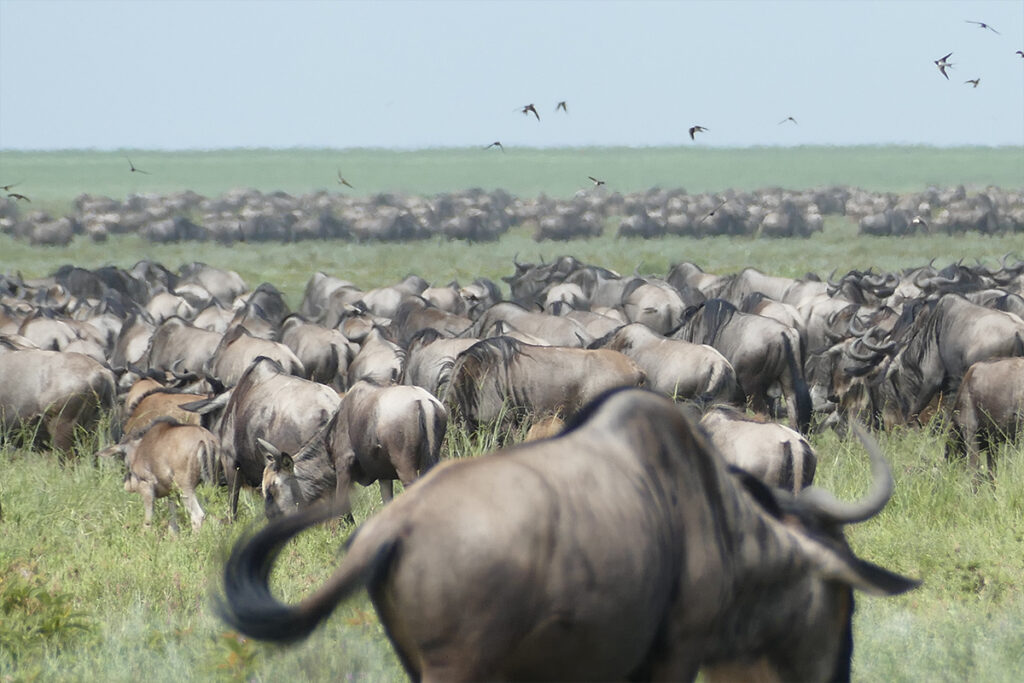While over 1.5 million wildebeests migrate through the Serengeti during the dry season, it is the predators silently stalking their paths that truly capture one’s intrigue. The dry season offers a stage, more distinct and thrilling, for witnessing this grand spectacle unfold in Tanzania. With the grasslands thinning, visibility is enhanced, making every safari moment more captivating.
The dry season in Tanzania, predominantly from June to October, boasts historical significance as it unveils a unique balance between nature and survival. During this period, the iconic landscape reveals its raw beauty, attracting wildlife to gather around scarce water sources. Remarkably, visiting at this time yields a 40% higher chance of observing a successful predator hunt, showcasing the intricate dance of nature’s persistence and instinct.

Dry Season Safari Tanzania
The dry season in Tanzania transforms the landscape into a breathtaking spectacle. From June to October, the Serengeti and other parks draw both wildlife and visitors alike. Specific animals become easier to spot, gathering around shrinking water sources. These conditions make it the perfect time for photographers and nature enthusiasts. According to this post, new safari options emerge every year, keeping the experience fresh and exciting.
One reason to choose a dry season safari in Tanzania is the Great Migration. Over a million wildebeests and zebras travel across the plains in search of water. Predators like lions and hyenas follow closely, leading to dramatic scenes. The sparse vegetation makes these interactions even easier to witness. This epic movement of animals is truly one of nature’s greatest shows.
Seeing animals up close in their natural habitat during the dry season is unforgettable. Different parks offer unique experiences based on their geographical features. For example, while the Serengeti is famous for the Great Migration, Tarangire National Park is renowned for its elephant herds. Opt for guided tours to maximize your chances of seeing rare animals. You can see more about choices of accommodations in the wild by reading here is the article.
For anyone planning this adventure, preparation is key. Bring lightweight clothing, a hat, and plenty of sunscreen to cope with the heat. Photography enthusiasts should pack extra batteries and memory cards. An itinerary can help manage visits to multiple national parks, each offering something different. This well-rounded preparation ensures a memorable and comfortable safari experience.
Unveiling the Magic: The Predators and the Wildebeests
Each year, the dry season reveals a captivating showdown between predators and wildebeests in Tanzania. As the grasslands dry up, millions of wildebeests embark on their epic journey across the Serengeti. This dazzling migration becomes a thrilling hunt as predators, including lions and cheetahs, take advantage of the abundance of prey. The dry, open plains increase visibility, allowing these dramatic interactions to be witnessed by fortunate onlookers. Observers can watch the strategic maneuvers, showcasing nature’s incredible balance.
Wildebeests travel vast distances in search of greener pastures and water. However, this journey is fraught with danger at every turn. Nile crocodiles lurk in rivers waiting for the perfect moment to strike. By intercepting the weaker members of the herd, they play a crucial role in maintaining the ecosystem. This cycle of survival and adaptation ensures the health of the environment.
Observing these interactions during a safari enhances the understanding of the ecosystem. Guided tours often provide insights into these relationships, making the experience educational as well as thrilling. Knowledgeable guides share stories and facts, explaining the roles each animal plays in the savannah. Witnessing a hunt can be both exhilarating and sobering. This natural balance is crucial to the ongoing health of the entire ecosystem.
The fragile harmony between predators and wildebeests exemplifies nature’s resilience. This relationship ensures that only the strongest prosper, promoting genetic health within the animal communities. As these animals migrate, they also aid in spreading seeds, further enriching the land. Engaging with this magical dance on safari immerses visitors in a world often unseen by everyday life. Experiencing such moments allows one to appreciate the hard, beautiful truths of the natural world.
Why Dry Season Safari is Best in Tanzania
The dry season in Tanzania is considered the best time for a safari due to its clear blue skies and mild weather. Wildlife is easier to spot as many animals gather around dwindling water sources. The wide-open savannahs offer unparalleled views, making sightings of the Big Five more frequent and thrilling. Guided tours ensure safety while providing incredible opportunities for photography. This period is perfect for capturing those once-in-a-lifetime moments against stunning backdrops.
During the dry season, vegetation thins out, improving visibility and making wildlife spotting more exciting. Animals are on the move, creating dynamic landscapes filled with action. You might witness a pride of lions stalking prey or a herd of elephants bathing. Enhanced predictability in animal behavior grants visitors unforgettable experiences. Each day brings new adventures as the ecosystem comes to life.
Tanzania’s best-known parks like Serengeti and Ngorongoro Crater teem with activity during this period. Safari-goers can enjoy comfortable temperatures, ranging from cool mornings to warm afternoons. Nights bring a crispness that enhances the beauty of stargazing in the African wilderness. Safaris between June and October offer the optimal experience. Those interested in cultural immersion can also interact with local Maasai communities.
Aside from outstanding wildlife viewing, the dry season allows visitors to explore additional adventures within Tanzania. Many parks offer walking safaris, providing a unique perspective on the land. Adventurers can also try hot-air ballooning for breathtaking sunrise views over the savannah. This time of year provides endless opportunities to connect with nature and create cherished memories. Whether you’re exploring solo or with family, the charm of the dry season never fades.
Essential Tips for an Unforgettable Dry Season Safari
Packing wisely is crucial for a successful safari adventure in Tanzania’s dry season. Lightweight and breathable clothing, preferably in neutral colors, is recommended. A wide-brimmed hat and sunglasses help protect against the sun’s harsh rays. Don’t forget sturdy, comfortable shoes for walking safaris. Sunscreen and insect repellent are essential to keep discomforts at bay.
Choosing the right camera gear ensures you capture every magical moment. Make sure to bring a camera with a good zoom lens to photograph distant wildlife. Extra batteries and memory cards are lifesavers, as the African wilderness is full of surprises. Practicing with your equipment before the trip can help avoid missed shots. It’s also worthwhile to bring binoculars for closer wildlife viewing.
A successful safari often depends on timing your excursions wisely. Early morning and late afternoon are the best times to venture out, as both animals and tourists are less active during the midday heat. This not only increases your chances of spotting wildlife but also allows for more pleasant viewing conditions. Some tours offer night-time safaris for a different experience altogether. Planning your schedule around these optimal times can make all the difference.
Staying hydrated is vital while exploring under the hot sun. Carry a refillable water bottle to ensure you always have access to fresh water. Many safari tours provide drinking water, but having your own supply adds convenience. Dehydration can spoil an adventure and make it harder to enjoy the incredible surroundings. Keeping hydrated helps you stay alert and fully engaged.
Respecting local cultures and wildlife contributes to a rewarding safari experience. Follow your guide’s instructions closely to maintain safety for yourself and the animals. It’s also respectful to learn a few phrases in Swahili, the local language. Engaging with local communities offers insight into their lifestyles and traditions. The more you immerse yourself in both nature and culture, the more unforgettable your journey becomes.
The Ecological Impact of Safaris in the Dry Season
Dry season safaris carry significant ecological impacts, both positive and negative. Increased visitor numbers can put stress on delicate habitats and wildlife. However, tourism revenue often funds critical conservation efforts. Parks can employ more rangers, who help protect animals from poaching. This financial support is vital for sustaining protected areas.
Safari vehicles contribute to wear and tear on the landscape. Heavy traffic on dirt roads can lead to soil erosion. Authorities implement strict rules to minimize these effects, such as restricting the number of vehicles in popular areas. Tour operators are encouraged to practice eco-friendly methods. Sustainable tourism practices aim to reduce the ecological footprint.
Local communities benefit from the economic boost of safari tourism. Lodges and camps employ residents, providing jobs and improving livelihoods. This encourages locals to support conservation efforts since their income depends on preserving the environment. Workshops and education programs further enhance community involvement. This creates a symbiotic relationship between tourism and ecological awareness.
Wildlife behavior can be altered due to the presence of tourists. Animals may become overly habituated to humans, changing their natural activities. While this can sometimes aid in their protection, it also carries risks. Careful management ensures animals retain their wild behaviors. Balancing human interaction with wildlife preservation remains a key challenge.
By choosing responsible safari operators, tourists can minimize negative impacts. Operators focusing on sustainability contribute to the overall health of the ecosystem. Eco-friendly accommodations, reduced waste, and conservation education play important roles. Travelers can support these initiatives by making informed choices. Ultimately, respecting nature ensures the enduring beauty and diversity of Tanzania’s wildlife.
How to Plan a Sustainable Dry Season Safari
Planning a sustainable dry season safari begins with selecting responsible tour operators. Look for companies prioritizing environmental conservation and local community support. Research their practices to ensure they minimize environmental impact. Many operators proudly display eco-certifications, reflecting their commitment to sustainability. A quick check on their website provides useful insights.
Opting for eco-friendly accommodation enhances your trip’s sustainability. Choose lodgings that use renewable energy sources and practice waste reduction. Many camps and lodges also involve local communities in their operations. Supporting enterprises that emphasize sustainability strengthens conservation efforts. This contributes to the overall health of the environment and supports local economies.
Packing thoughtfully helps reduce your carbon footprint while on safari. Bringing reusable items such as water bottles, straws, and tote bags significantly cuts down on waste. Avoid single-use plastics that contribute to pollution. Packing light reduces your travel footprint as well, since less weight requires less fuel for transport. Every small step makes a difference in promoting sustainability.
Engaging in conservation activities enriches the safari experience and supports local efforts. Many operators offer opportunities to participate in tree planting or community projects. This not only leaves a positive impact but also fosters personal connections with the land and its people. Choosing activities that give back enhances the ecological value of your adventure. Volunteering during your visit adds meaning to your travel.
Respect for wildlife is paramount during your safari adventure. Keeping a safe distance and following guide instructions ensures minimal disturbance. Disturbing animals can alter their behavior and affect the ecosystem. Encourage others to follow these guidelines to protect the natural environment. By acting responsibly, you contribute to the preservation of Tanzania’s stunning wilderness.

Frequently Asked Questions
Exploring a dry season safari in Tanzania raises many interesting queries. Here, we answer some common questions to help plan the best possible safari experience.
1. What is the best time to visit Tanzania for a safari?
The best time to visit Tanzania for a safari is during the dry season, from June to October. During this period, the weather is pleasant, and animals gather around water sources, making wildlife viewing easier. Additionally, the Great Migration occurs in the Serengeti, providing an unforgettable experience.
Visitors can enjoy clear skies and comfortable temperatures during this time. Lodges and campsites are also well-prepared to offer top-notch services, ensuring a memorable adventure. It’s advised to book accommodation and tours in advance due to the high demand during these months.
2. How does the dry season affect animal behavior in Tanzania?
The dry season significantly impacts animal behavior in Tanzania as water becomes scarce. Animals must travel long distances to find water, gathering around limited sources, which makes them easier to spot. Predators also take advantage of this concentration, leading to more frequent and intense hunting scenes.
This period offers an excellent opportunity for observing these interactions up close. The thin vegetation further enhances visibility, allowing for better wildlife photography. Many animals, including elephants, lions, and zebras, display natural behaviors vital for their survival, offering valuable insights into the ecosystem.
3. What should I pack for a dry season safari in Tanzania?
Packing appropriately is crucial for a comfortable and enjoyable safari experience. Lightweight and neutral-colored clothing is recommended to blend in with the surroundings. Essentials include a wide-brimmed hat, sunglasses, sturdy shoes, and plenty of sunscreen to protect against the sun.
Don’t forget to bring binoculars and a camera with a good zoom for capturing wildlife moments. A refillable water bottle is also vital to stay hydrated during excursions. Additionally, packing insect repellent and personal medical supplies ensures you are prepared for any situation.
4. Are guided tours necessary for a dry season safari?
Guided tours enhance the safari experience by providing expert knowledge and ensuring safety while exploring the wild. Experienced guides can locate and interpret animal behaviors, enriching visitors’ understanding. They also navigate the parks’ best routes, maximizing the chances of witnessing remarkable wildlife scenes.
Moreover, guided tours often include insights into local culture and conservation efforts, offering a more comprehensive experience. Many tour operators adhere to sustainable practices, promoting environmental responsibility. Opting for a guided tour ensures a well-rounded and educational adventure.
5. How do dry season safaris impact local communities?
Dry season safaris positively impact local communities by generating income and employment opportunities. Lodges and camps often hire residents, providing jobs that support families and spur economic growth. Tourists purchasing locally-made goods and services further stimulate the community’s economy.
Additionally, safari tourism funds conservation projects, creating a sustainable relationship between tourism and preservation. Many operators involve local communities in these efforts, promoting awareness and participation. Thus, a well-planned safari contributes to both enjoyable experiences and regional development.



